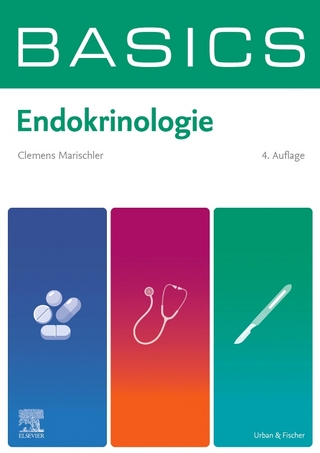Major Sex-Determining Genes
Springer-Verlag Berlin and Heidelberg GmbH & Co. K
978-3-540-08965-0 (ISBN)
Lese- und Medienproben
- Titel ist leider vergriffen;
keine Neuauflage - Artikel merken
Had Escherichia coli of 200 million years or so ago been endowed with the foresight to anticipate the eventual emergence of and subsequent dominance by mammals of this Earth, they would no doubt have equipped themselves, in anticipation of the coming cer- tainty, with the lac operon to deal with lactose in the suckling mammalian infant's gut. Had they been able to do so, the actual emergance of mammals would have exerted no selective pressure upon existing E. COLI.
I Sexual Dimorphism as a Dispensable Appendage of the Sex-Determining Mechanism.- 1 Why Sexual Dimorphism?.- 2 Man as a Sexually Dimorphic Species.- 3 Male Chauvinism and a Misunderstanding of Sexual Dimorphism.- II H-Y Antigen and Chromosomal Determination of Primary (Gonadal) Sex.- 4 The Number of Genes in the Mammalian Genome and the Need for Master Regulatory Genes.- 5 The Mammalian Sex Chromosomes.- 6 Initial Gonadal Differentiation and the History of H-Y Antigen.- a) Initial Gonadal Differentiation.- b) The History of H-Y Antigen.- 7 Testis-Organizing Function of H-Y Antigen.- a) Normal XO Males of the Mole Vole, Ellobius lutescens, and Fertile XY or Even XYY Females of the Wood Lemming, Myopus schisticolor.- b) Exceptional Individuals among Man and Other Mammalian Species: XX Males and XY Females.- c) Moscona Experiments: Testicular Cells Lysostripped of H-Y Antigen Organize Ovarian-Follicle-Like Aggregates.- d) Polarized Distribution of the H-Y Antigen on the Plasma Membrane of Testicular Sertoli Cells and Underlying Mesenchymal (Basement Membrane) Cells.- 8 The Developmental Strategy of Competitive Displacements and the Role of ?2-Microglobulin-H-2 or HLA Dimers in Organogenesis.- a) H-Y Antigen and the Fate of XX/XY Chimeric Gonads.- b) H-Y Antigen and True Hermaphrodites.- c) ?2-Microglobulin-MHC (H-2 of the Mouse and HLA of Man) Antigen Dimers as the Plasma Membrane Anchorage Site of Testis-Organizing H-Y Antigen.- d) Why So Much Allelic Polymorphism at the Ubiquitously Expressed MHC Antigen Loci?.- e) Identification of Disseminated Human H-Y Antigen in the Daudi Culture Medium.- f) The Specific Receptor for H-Y Antigen Expressed by Gonadal Cells.- 9 Testis-Organizing H-Y Antigen and the Cell Lineage-Specific Antigen of Testicular Sertoli and Ovarian Follicular Cells: H-2 Restricted and Nonrestricted Killing by Female T-Cells of Testicular Sertoli Cells.- a) Pure Sertoli Cells from XX, Sxr/-Male Mouse Testes.- b) Anti-Sertoli Antibodies Generated by H-2 Compatible Females Detect Two Plasma Membrane Antigens.- c) Two Plasma Membrane Antigens and H-2 Restricted Versus Unrestricted Lysis of Testicular Sertoli Cells by Doubly Primed Female T-Cells.- d) Relevance of These Two Antigens to Testicular Organogenesis.- 10 Why Are a Number of Unlinked Genes Involved in H-Y Antigen Expression?.- a) Flexibility in Gonadal Development of Lower Vertebrates.- b) What If the H-Y Structural Gene Is Y-Linked?.- c) What If the H-Y Structural Gene Is X-Linked?.- d) The Origin of H-Y Antigen in Virilized Bovine Freemartin Gonads as an Enigma.- III Nuclear-Cytosol Androgen-Receptor Protein and Hormonal Secondary (Extragonadal) Sex Determination.- 11 The Inherently Feminine Embryonic Plan and Testosterone Induction of Male Secondary Sex.- a) Testosterone and Fetal Development of Secondary Sex.- b) Fetal Synthesis of Testosterone and the Two Means of Its Delivery to Targets.- c) Fetal Versus Postpubertal Response to Testosterone and Mesenchymal Versus Epithelial Cells as Testosterone Targets.- d) 5a-Reductase and the Relative Efficacy of Testosterone Versus 5a-Dihydrotestosterone.- 12 Abolition of All Androgen Target Organ Responses by the X-Linked Tfm (Testicular Feminization) Mutation.- a) Tfm/Y Mice and Rats and Their Fetal Secondary Sex Differentiation.- b) Tfm Mutation and the Neonatal Masculinization of the Central Nervous System.- c) Androgen Target Organs of Adult Tfm/Y.- d) Spermatogenesis and Spermiogenesis by Tfm/Y Germ Cells.- e) Asexual Behavior of Adult Tfm/Y.- 13 The Tfm Mutation Affects the Nuclear-Cytosol Androgen-Receptor Protein.- a) General Properties of the Nuclear-Cytosol Androgen-Receptor Protein.- b) Deficiency of the Nuclear Cytosol Androgen-Receptor Protein Shown in Affected Tfm/Y.- c) Two Tfm Gene Loci on the Mammalian X?.- References.
| Reihe/Serie | Monographs on Endocrinology ; 11 |
|---|---|
| Zusatzinfo | 10 black & white illustrations, biography |
| Verlagsort | Berlin |
| Sprache | englisch |
| Gewicht | 500 g |
| Themenwelt | Medizinische Fachgebiete ► Innere Medizin ► Endokrinologie |
| Studium ► 2. Studienabschnitt (Klinik) ► Humangenetik | |
| Naturwissenschaften ► Biologie | |
| ISBN-10 | 3-540-08965-9 / 3540089659 |
| ISBN-13 | 978-3-540-08965-0 / 9783540089650 |
| Zustand | Neuware |
| Informationen gemäß Produktsicherheitsverordnung (GPSR) | |
| Haben Sie eine Frage zum Produkt? |
aus dem Bereich



